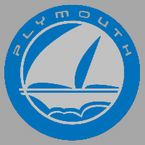Plymouth Models
Plymouth photos, specs - Car Pictures & Images
 Plymouth (founded 1928 - dissolved 2001) was a marque of automobile based in the United States, marketed by the Chrysler Corporation and DaimlerChrysler. OriginsThe Plymouth automobile was introduced on July 7, 1928. It was the Chrysler Corporation's first entry in the low-priced field, which at the time was dominated by Chevrolet and Ford. Plymouths were actually priced a little higher than the competition, but they offered standard features such as external expanding hydraulic brakes that the competition did not provide. Plymouths were originally sold exclusively through Chrysler dealerships. The logo featured a rear view of the Mayflower ship which landed at Plymouth Rock. However, the Plymouth brand name came from Plymouth Binder Twine, chosen by Joe Frazer for its popularity among farmers. |
Used Plymouth
The origins of the first Plymouth can be traced back to the Maxwell automobile. When Walter P. Chrysler took over control of the trouble-ridden Maxwell-Chalmers car company in the early 1920s, he inherited the Maxwell as part of the package. After he used the company's facilities to help create and launch the Chrysler car in 1924, he decided to create a lower-priced companion car. So for 1926 the Maxwell was reworked and re-badged as the low-end Chrysler "52" model. In 1928, the "52" was once again redesigned to create the Chrysler-Plymouth Model Q. The "Chrysler" portion of the nameplate was dropped with the introduction of the Plymouth Model U in 1929. Great Depression, 1940s, and 1950sWhile the original purpose of the Plymouth was simply to cover a lower-end marketing niche, during the Great Depression of the 1930s the car would help significantly in ensuring the survival of the Chrysler Corporation in a decade when many other car companies failed. Beginning in 1930, Plymouths were sold by all three Chrysler divisions (Chrysler, DeSoto, and Dodge). Plymouth sales were a bright spot during this dismal automotive period, and by 1931 Plymouth rose to the number three spot among all cars. In 1939 Plymouth produced 417,528 vehicles, of which 5,967 were roadsters, or two-door convertibles with rumble seats. The 1939 Roadster was prominently featured at Chrysler's exhibit at the 1939 World's Fair, advertised as the first mass-production convertible with a power folding top. It featured a 201-cubic-inch, 82-horsepower version of the Chrysler Flathead Six engine. For much of its life, Plymouth was one of the top selling American automobile brands, along with Chevrolet and Ford ("the low-priced three"). Plymouth even surpassed Ford for a time in the 1940s as the second most popular make of automobiles in the U.S. Through 1956, Plymouth vehicles were known for their durability, affordability and engineering. In 1957, Chrysler's Forward Look styling theme produced cars with much more advanced styling than Chevrolet or Ford, although Plymouth's reputation would ultimately suffer as the cars were prone to rust and sloppy assembly. Because of its new "Forward Look" styling, however, 1957 total production soared to 726,009, about 200,000 more than 1956, and the largest output yet for Plymouth. The marque also introduced its limited production Fury line in 1956, and it too benefited from the crisp Forward Look designs. » Read More About Plymouth |





